Jacques Boullaire
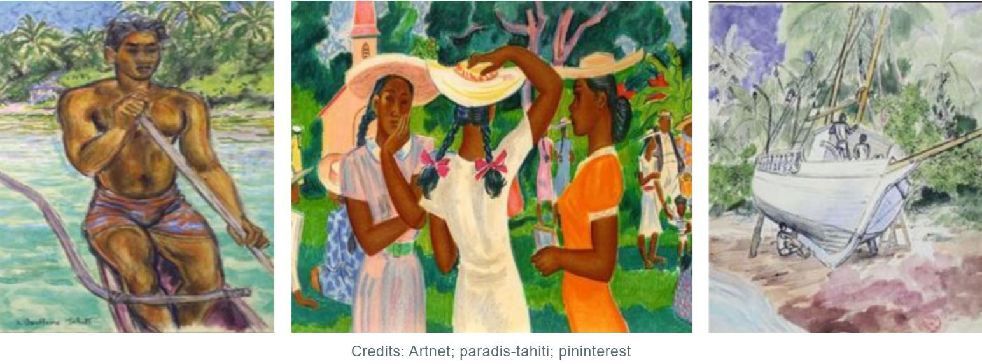
Mention Tahiti and art in the same sentence and most of us would think of Paul Gauguin (7 June 1848 – 8 May 1903), the French post-Impressionist painter who fell in love with a Tahitian girl and spent the last 10 years of his life in French Polynesia.
Paul Gauguin was upper most in my mind when, in 2012, I had the joy of a cruising around the Society Islands of French Polynesia for a few days on the Paul Gauguin, a small ship named in his honour.
The preserved islands and culture of the exotic South Seas inspired not only Gauguin and Matisse, but also little know French artist Jacques Boullaire.
We explored several art galleries in the tiny city of Papeete. The Jacques Boullaire Gallery was especially interesting, as we were instantly attracted to the soft pastels and watercolours, which you can see from the opening images.
A pleasant French lady ran the gallery – her English was as limited as our French. We lingered and purchased a few postcard size prints, as shown here.
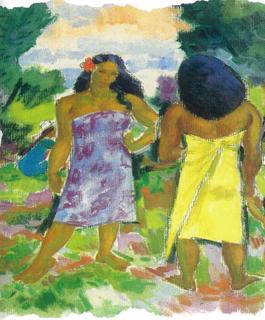
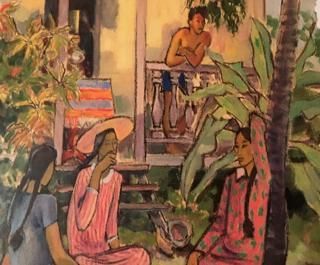
The owner saw our interest and to our delight presented us with a published copy of Tahiti a Sketchbook – the works of Jacques Boullaire - a treasured memento.
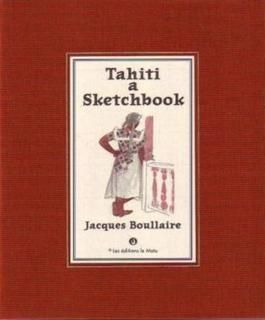
Browsing the internet you will find very little about him, however his daughter Aiu Boullaire-Dschamps documented his life in the Sketchbook, shared here with you today.
Like Gauguin, Jacques Boullaire (20 December 1893 – 5 October 1976) was born in France. With wealthy parents and a privileged upbringing, Jacques was destined to be a lawyer. Even as a youngster, he was a dreamer, spending his days collecting insects in the garden and contemplating silhouettes at night. He loved to draw and despite his poor eyesight, filled page after page with meticulously drawn scenes in minute detail.
When WWI broke out he became a fighter pilot, painting scenes of humour on the side of his aircraft, surviving the horrors by viewing it all as a game. His family tried to keep him in Paris – giving him the position of Director of Advertising for automobiles – however Jacques found this too constraining.
He turned his back on financial security and moved to bohemian Montparnasse, surrounded by poor artists and even poorer models, engrossing himself in the life of a fledgling artist.
In 1935 he met Anne Herve, also an artist, who was born and raised in Tahiti from adventurous French parents and recently arrived in Paris. Jacques had heard exotic stories and dreamed of the Pacific Islands. Anne had lived without electricity or running water – no doctors or radios. Jacques was filled with wonder. They fell in love and soon married, spending their lives travelling between Paris and the Pacific Islands. Jacques was overwhelmed by the brilliant light, the melody of colours of the South Pacific.
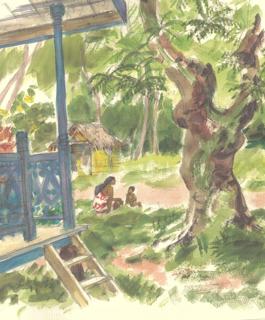
Like Gauguin he was charmed by the bronzed and rounded bodies of the women. Their poses and postures new and unformed, squatting on the ground or steps, no high heels or chairs.
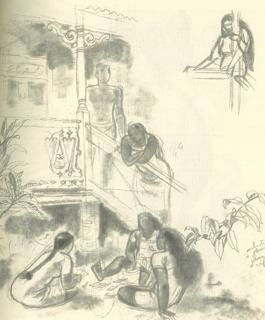
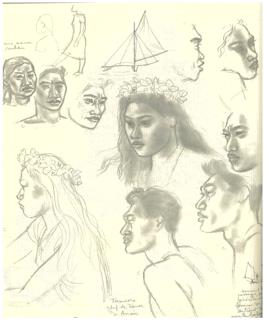
With their daughter Aiu (“Baby” in Tahitian) they journeyed the islands. On Bora Bora they lived like the Swiss family Robinson, On Moorea they camped on deserted beaches, In Papeete, they lived in the house of the Queen’s daughter, Princess Takau. For them it was idyllic.
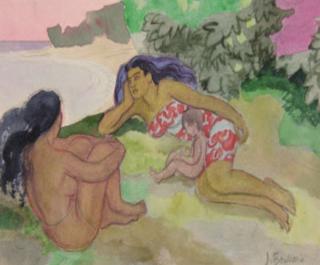
All the while Jacques studied every detail, observed every gesture, movement, stance and set hand to paper. When he left an island, not a person remained a stranger to him. Every portrait bore a name. In 1952, the family returned to France with 14,000 sketches, which Jacques used for the rest of his life, modelling and re-modelling the true face of Polynesia, resulting in 250 etchings.
On a final trip to Tahiti in 1966, he re-visited his most loved places and discovered new charms and painted exquisite water colours brimming with freshness.
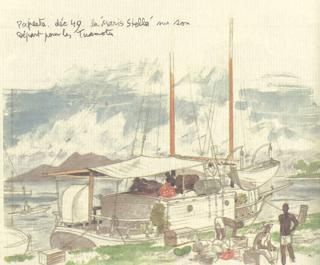
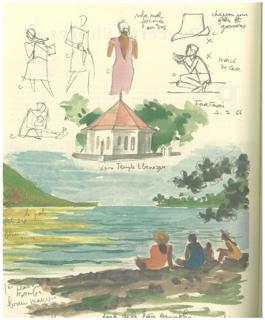
Jacques died in Paris quietly at his work table, engravers needle in his hand.
The lives of Jacques Boullaire and Paul Gauguin overlapped, but I have not found any references where they met, although on a small island like Tahiti it must have been inevitable.
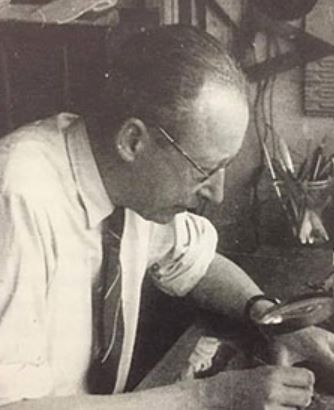
Its too hard to leave Tahiti after only one day, so tomorrow the subject will be Paul Gauguin.
Credits: Unless otherwise stated text and images taken from Tahiti a Sketchbook.
